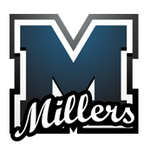Millburn is a suburban township in southwestern Essex County, within the U.S. state of New Jersey, and part of the New York metropolitan area. As of the 2020 United States census, the township's population was 21,710, its highest decennial count ever and an increase of 1,561 (+7.7%) from the 20,149 recorded at the 2010 census, which in turn had reflected an increase of 384 (+1.9%) from the 19,765 counted at the 2000 census. Short Hills, with a 2020 population of 14,422, is an unincorporated community and census-designated place (CDP) located within Millburn that is home to most of the township's population.Millburn was created as a township by an act of the New Jersey Legislature on March 20, 1857, from portions of Springfield Township, when Union County was formed. Earlier known variously as Milltown, Millville, Rum Brook, and Vauxhall, the name "Millburn" was adopted before the township was established. The township's name derives from the burn (Scottish for a stream) that powered mills in the area.The township is home to the South Mountain Reservation, The Mall at Short Hills, and the Paper Mill Playhouse, an established regional theater. The West Branch of the Rahway River runs through downtown Millburn, and the Paper Mill Playhouse is situated on the banks of the river.
New Jersey Monthly magazine ranked Millburn as the 53rd best place to live in New Jersey in its 2008 rankings of the "Best Places to Live" in New Jersey.Millburn had the highest annual property tax bills in New Jersey in 2018 of $24,308, compared to a statewide average of $8,767. The township had the highest annual bill in 2009 of $19,097, compared to the statewide average of $7,300 that year, which was the highest in the United States. This is primarily a function of high property values, as Millburn had the lowest effective property tax rate in 2014 (1.9%) among the 22 municipalities in Essex County.The township is one of New Jersey's highest-income communities. In 2000, Millburn had the 6th-highest per capita income in the state, with $76,796. Based on data from the 2006–2010 American Community Survey, the township had a per-capita income of $84,663, ranked 10th in the state. Based on data from the American Community Survey for 2013–2017, Millburn residents had a median household income of $202,862, ranked highest in the state among municipalities with more than 10,000 residents, more than double the statewide median of $76,475.







